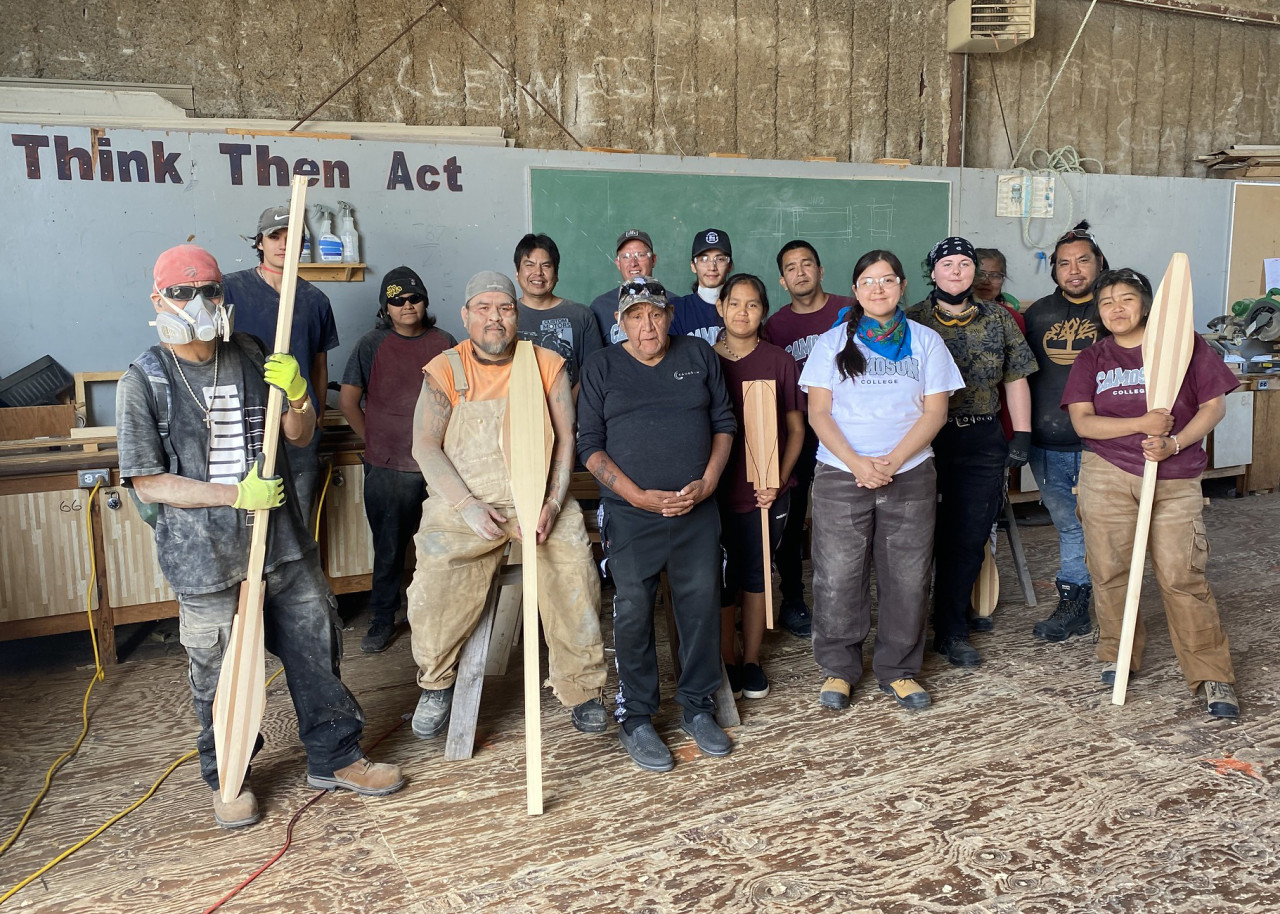Indigenous Peoples in Trades Training students at Camosun College applied their carpentry skills by carving, painting and preparing red and yellow cedar war canoe paddles with designs reflecting the college’s strategic priorities.
Learn about the role of paddling in Coast Salish culture
Sharing traditional knowledge
Empowering Indigenous students and learning paddling culture.
Francis Wilson, Cowichan canoe builder; Larry Underwood, Coordinator, Indigenous Peoples in Trades Training; Susan Wilson, Coordinator, Indigenous Peoples in Trades Training
The original artwork was created by Camosun alum and Coast Salish artist Dylan Thomas and is featured on the six priorities of the 2023-2028 Strategic Plan.
- Strengthening the Camosun Advantage (Thunderbird)
- ÍY,ĆȺNEUEL OL: doing good work together (Hands)
- Responding to community needs (Eagle)
- Rising to the challenges of climate change (Salmon)
- Honouring Indigenous resurgence (Ancestor)
- Advancing social justice, equity, diversity and inclusion (Mink)
The Spirit of Camossung represents the concept of transformation as told through the Songhees legend of Camossung — where two waters meet and are transformed. In the legend, Halyas, who is said to be a transformer being, turned a young girl, known as Camossung, into stone and cast her into the narrows, near where the Tillicum bridge is located today. After her transformation, the Spirit of Camossung was believed to be a protector of those traveling by canoe through the Gorge to the Portage Inlet and was able to grant powers to those who swam in the narrows.
In the image, Camossung is shown gesturing the ‘raising of hands’ to honour and acknowledge the ancestors and give thanks for the ancestral lands. Above her head, she is holding six individual paddles each with a traditional symbol to represent the six priorities of the college’s strategic plan. The paddles in the strategic plan image are another reference to the legend of Camossung and are also intended to represent the notion of the college community ‘paddling or pulling together.’

